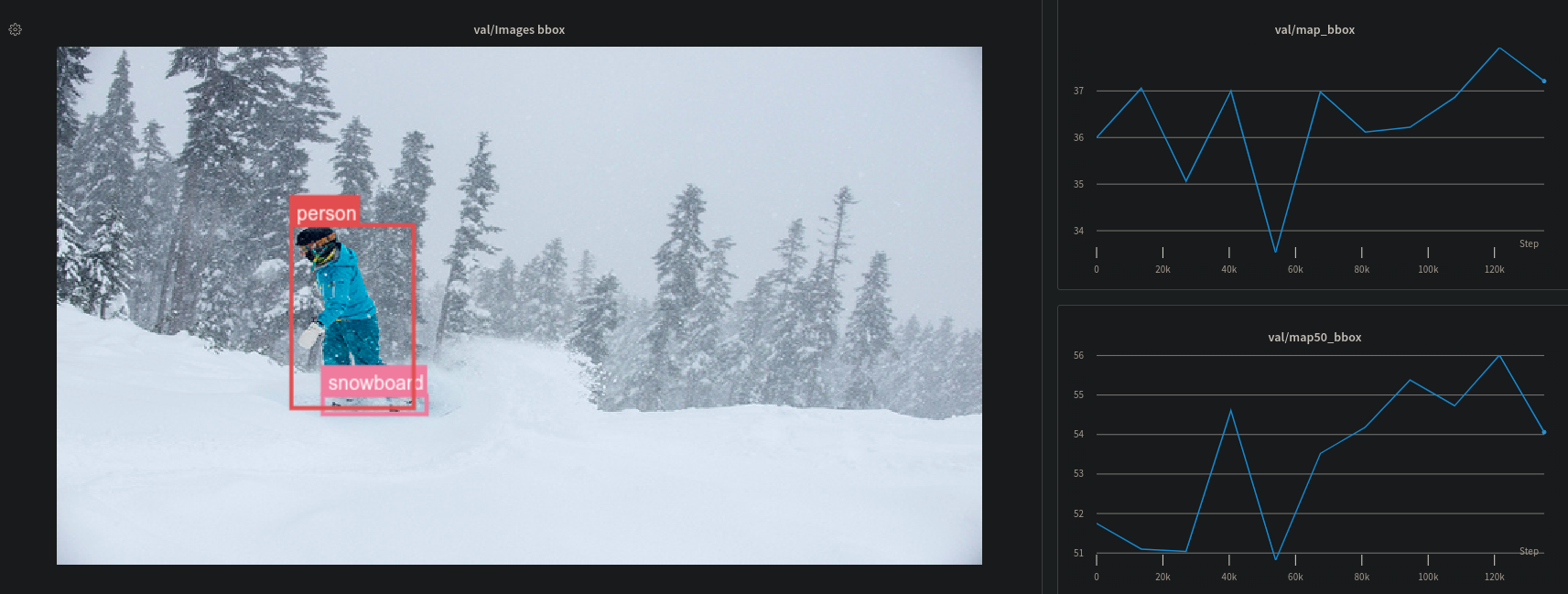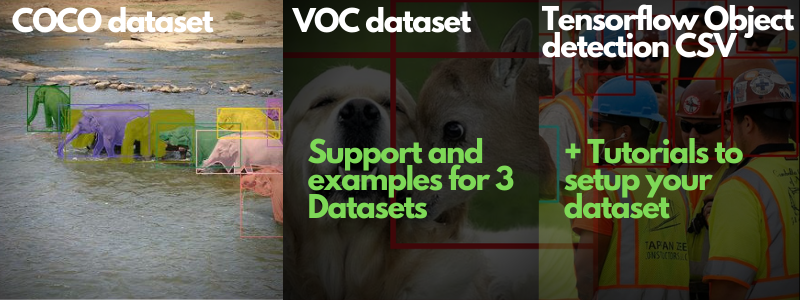Tensorflow implementation of DETR : Object Detection with Transformers, including code for inference, training, and finetuning. DETR is a promising model that brings widely adopted transformers to vision models. We believe that models based on convolution and transformers will soon become the default choice for most practitioners because of the simplicity of the training procedure: NMS and anchors free! Therefore this repository is a step toward making this type of architecture widely available.
DETR paper: https://arxiv.org/pdf/2005.12872.pdf
Torch implementation: https://github.com/facebookresearch/detr
About this implementation: This repository includes codes to run an inference with the original model's weights (based on the PyTorch weights), to train the model from scratch (multi-GPU training support coming soon) as well as examples to finetune the model on your dataset. Unlike the PyTorch implementation, the training uses fixed image sizes and a standard Adam optimizer with gradient norm clipping.
Additionally, our logging system is based on https://www.wandb.com/ so that you can get a great visualization of your model performance!
- Checkout our logging board with the reports here: https://wandb.ai/thibault-neveu/detr-tensorflow-log
The code has been currently tested with Tensorflow 2.3.0 and python 3.7. The following dependencies are required.
wandb
matplotlib
numpy
pycocotools
scikit-image
imageio
pandas
pip install -r requirements.txt
This repository currently supports three dataset formats: COCO, VOC, and Tensorflow Object detection csv. The easiest way to get started is to set up your dataset based on one of these formats. Along with the datasets, we provide a code example to finetune your model. Finally, we provide a jupyter notebook to help you understand how to load a dataset, set up a custom dataset, and finetune your model.
To get started with the repository you can check the following Jupyter notebooks:
- ✍ DETR Tensorflow - How to load a dataset.ipynb
- ✍ DETR Tensorflow - Finetuning tutorial.ipynb
- ✍ DETR Tensorflow - How to setup a custom dataset.ipynb
As well as the logging board on wandb https://wandb.ai/thibault-neveu/detr-tensorflow-log and this report:
Run the following to evaluate the model using the pre-trained weights.
- data_dir is your coco dataset folder
- img_dir is the image folder relative to the data_dir
- ann_file is the validation annotation file relative to the data_dir
Checkout ✍ DETR Tensorflow - How to load a dataset.ipynb for more information about the supported dataset ans their usage.
python eval.py --data_dir /path/to/coco/dataset --img_dir val2017 --ann_file annotations/instances_val2017.json
Outputs:
| all | .50 | .55 | .60 | .65 | .70 | .75 | .80 | .85 | .90 | .95 |
-------+-------+-------+-------+-------+-------+-------+-------+-------+-------+-------+-------+
box | 36.53 | 55.38 | 53.13 | 50.46 | 47.11 | 43.07 | 38.11 | 32.10 | 25.01 | 16.20 | 4.77 |
mask | 0.00 | 0.00 | 0.00 | 0.00 | 0.00 | 0.00 | 0.00 | 0.00 | 0.00 | 0.00 | 0.00 |
-------+-------+-------+-------+-------+-------+-------+-------+-------+-------+-------+-------+
The result is not the same as reported in the paper because the evaluation is run on the original image size and not on the larger images. The actual implementation resizes the image so that the shorter side is at least 800pixels and the longer side at most 1333.
To fine-tune the model on a new dataset we siply need to set the number of class to detect in our new dataset (nb_class). The method will remove the last layers that predict the box class&positions and add new layers to finetune.
# Load the pretrained model
detr = get_detr_model(config, include_top=False, nb_class=3, weights="detr", num_decoder_layers=6, num_encoder_layers=6)
detr.summary()
# Load your dataset
train_dt, class_names = load_tfcsv_dataset(config, config.batch_size, augmentation=True)
# Setup the optimziers and the trainable variables
optimzers = setup_optimizers(detr, config)
# Train the model
training.fit(detr, train_dt, optimzers, config, epoch_nb, class_names)The following commands gives some examples to finetune the model on new datasets: (Pacal VOC) and (The Hard hat dataset), with a real batch_size of 8 and a virtual target_batch size (gradient aggregate) of 32. --log is used for logging the training into wandb.
- data_dir is your voc dataset folder
- img_dir is the image folder relative to the data_dir
- ann_file is the validation annotation file relative to the data_dir
python finetune_voc.py --data_dir /home/thibault/data/VOCdevkit/VOC2012 --img_dir JPEGImages --ann_dir Annotations --batch_size 8 --target_batch 32 --log
- data_dir is the hardhatcsv dataset folder
- img_dir and ann_file set in the training file to load the training and validation differently
Checkout ✍ DETR Tensorflow - How to load a dataset.ipynb for more information about the supported dataset ans their usage.
python finetune_hardhat.py --data_dir /home/thibault/data/hardhat --batch_size 8 --target_batch 32 --log
(Multi GPU training comming soon)
- data_dir is the coco dataset folder
- img_dir and ann_file set in the training file to load the training and validation differently.
python train_coco.py --data_dir /path/to/COCO --batch_size 8 --target_batch 32 --log
Here is an example of running an inference with the model on your webcam.
python webcam_inference.py
The pretrained weights of this models are originaly provide from the Facebook repository https://github.com/facebookresearch/detr and made avaiable in tensorflow in this repository: https://github.com/Leonardo-Blanger/detr_tensorflow



